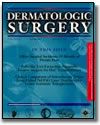Stromal Progenitor Cells Present Within Liposuction

Dermatologic Surgery
1999 Abstract
9912-945 Stashower
Stashower M, Smith K, Williams J, Skelton H.
Stromal progenitor cells present within liposuction and reduction abdominoplasty fat for autologous transfer to aged skin.
Dermatol Surg. 1999 Dec;25(12):945-9. PMID: 10594628 National Navel Medical Center, Bethesda, MD 20889, USA.
BACKGROUND:
Autologous fat is used for direct transfer to locally replace fat, as well as for use intradermally in the treatment of rhytids in aged skin.
OBJECTIVE:
To determine if the components of the autologous fat could be separated to produce a better agent for the treatment of rhytids.
METHODS:
Liposuction material from four patients and fat from abdominoplasty from five patients was processed by homogenization and centrifugation to separate mature lipocytes from other stromal cell populations in its associated extracellular matrix, and then to separate this from the blood and cellular debris. The cellular layer was evaluated histologically and with the immunohistochemical antibodies for CD34, SM-actin, S-100 protein, MIB-1, Bcl-2, and factor XIIIa.
RESULTS:
The cellular layer showed spindle cells, some small vascular structures, a small amount of mature fat, and extracellular matrix. CD34 showed diffuse staining of most spindle and endothelial cells in all sections, factor XIIIa showed only focal staining of spindle and dendritic cells, and Bcl-2 showed light to moderate staining in scattered cells within the cellular component. S-100 protein, SM-actin, and MIB-1 were negative.
CONCLUSION:
Processed liposuction and abdominoplasty processed fat may be ideal for the treatment of wrinkles in aged skin because it contains progenitor stromal cells that are known to be present within the fat and which may be concentrated by processing methods.
